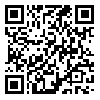Volume 21, Issue 2 (8-2022)
TB 2022, 21(2): 99-113 |
Back to browse issues page
Download citation:
BibTeX | RIS | EndNote | Medlars | ProCite | Reference Manager | RefWorks
Send citation to:



BibTeX | RIS | EndNote | Medlars | ProCite | Reference Manager | RefWorks
Send citation to:
Garavand H, Sabzian S. Evaluation of the effectiveness of habit reversal techniques on reducing nail biting disorder and state/trait anxiety of male high school Students in khorramabad. TB 2022; 21 (2) :99-113
URL: http://tbj.ssu.ac.ir/article-1-1417-en.html
URL: http://tbj.ssu.ac.ir/article-1-1417-en.html
Hazrat-e Masoumeh University , sabzian1989@yahoo.com
Abstract: (620 Views)
Introduction: Nail biting is an inappropriate habit and its exact cause is debatable. Researchers believe that nail biting disorder is often associated with psychiatric disorders, including anxiety. State/trait anxiety can be considered an unstable emotional state reflecting the individual's interpretation of a stressful situation in a particular time frame and varies depending on the degree to which the situation is perceived threatening. This study aims to determine the evaluation of the effectiveness of habit reversal techniques on reducing nail biting disorder and state/trait anxiety in students.
Methods: The present semi-experimental study with pretest, post-test, and follow-up was conducted on six junior high school male students in the age range of 13-15 years, who asked for help by referring to the school counseling and were selected by convenience sampling method. They received a program of habit reversal techniques individually in 6 sessions for 1 month. Clinical interviewing, frequency recording of nail biting per day, and state/trait anxiety test were used to measure the variables.
Results: Data analysis showed that habit reversal techniques reduce nail biting and students' state/trait anxiety. Follow-up one month after the end of treatment indicated the persistence of these results.
Conclusion: The habit reversal training is effective on treating nail biting, reducing anxiety, and promoting the person life quality and symptoms from nail biting. Due the low sample size, it is suggested that while repeating the study in a larger sample, its effectiveness on the treatment of other habitual disorders be studied.
Methods: The present semi-experimental study with pretest, post-test, and follow-up was conducted on six junior high school male students in the age range of 13-15 years, who asked for help by referring to the school counseling and were selected by convenience sampling method. They received a program of habit reversal techniques individually in 6 sessions for 1 month. Clinical interviewing, frequency recording of nail biting per day, and state/trait anxiety test were used to measure the variables.
Results: Data analysis showed that habit reversal techniques reduce nail biting and students' state/trait anxiety. Follow-up one month after the end of treatment indicated the persistence of these results.
Conclusion: The habit reversal training is effective on treating nail biting, reducing anxiety, and promoting the person life quality and symptoms from nail biting. Due the low sample size, it is suggested that while repeating the study in a larger sample, its effectiveness on the treatment of other habitual disorders be studied.
Type of Study: Research |
Subject:
General
Received: 2015/04/17 | Accepted: 2022/08/1 | Published: 2022/08/1
Received: 2015/04/17 | Accepted: 2022/08/1 | Published: 2022/08/1
Send email to the article author
| Rights and permissions | |
 |
This work is licensed under a Creative Commons Attribution-NonCommercial 4.0 International License. |







